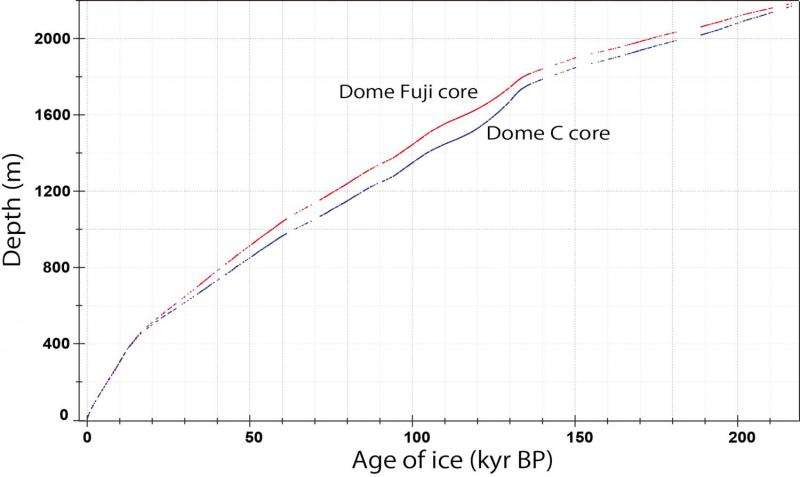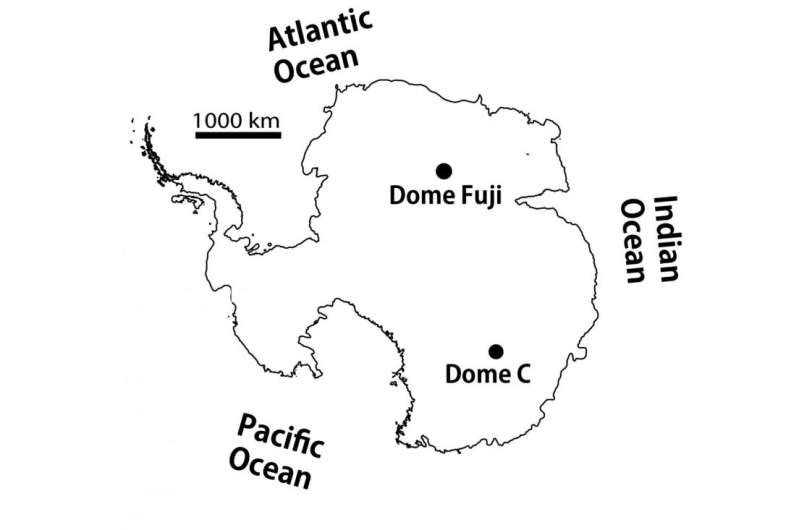An ice core study to determine the timing and duration of historical climate stages

Ice core records are rich archives of the climate history during glacial-interglacial cycles over timescales of up to ~800 kyr before the present. In ice core studies, the accurate and precise dating of the core samples is a central issue that must be investigated to better constrain the timing, sequence, and duration of past climatic events.
To help solve this issue, two deep ice cores were drilled at the remote dome summits Dome Fuji (DF) and EPICA Dome C (EDC) in Antarctica (Figure 1) and were subsequently synchronized in time by matching identical volcanic events. Precise synchronization was possible because large volcanic eruptions on the Earth can be commonly identified in ice cores by the presence of high concentrations of sulfuric acid. A total of 1,401 volcanic matching points were identified within the past 216 kyr (Figure 2). These matching points were then used to precisely compare the two chronologies between these ice cores. The ages between the matching points in the cores were within 2 kyr, except during the last interglacial period referred to as "Marine Isotope Stage (MIS) 5", which occurred from 80-130 kya. The DF core produced ages that were older than the EDC core, with peak values in the age difference of 4.5 kyr at MIS 5d (ca. 120 kya) and 3.1kyr at MIS 5b (ca. 90 kya).
The causes of the age differences at MIS 5 were proposed to occur from (i) an overestimation of the surface mass balance at around MIS 5d-6 in the glaciological model, and (ii) an error in one of the age constraints by ~3 kyr at MIS 5b. Additionally, we found that changes in the water stable isotope signatures in the ice at DF tended to occur before the same changes at EDC, with the time between changes being more pronounced during cold periods. The results suggested that signals that were indicative of abrupt climate change tended to propagate first at DF and later at EDC. The results of the research have been published in the journal Climate of the Past.

Dr. Shuji Fujita of the National Institute of Polar Research, Tokyo, is one of the two lead authors on the paper and has commented: "Our work contributes establishing a common time scale of ice cores and will be extremely important in studies of temporal and spatial propagation of abrupt climate change in the Antarctic."
Journal information: Climate of the Past
Provided by Research Organization of Information and Systems





















